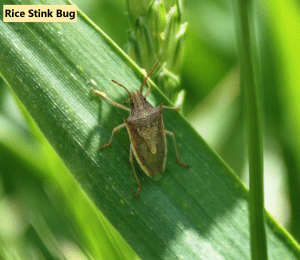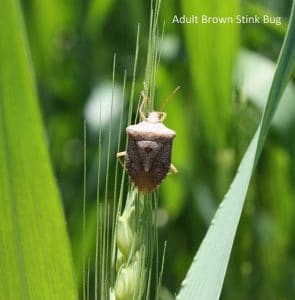Management options
- Economically damaging infestations in Tennessee are rare, and thus, insecticide treatments are seldom needed.
- If treatment is needed, pyrethroid insecticides that are labeled for wheat would generally be recommended. The highest labeled rates are suggested if brown stink bugs are numerous.



